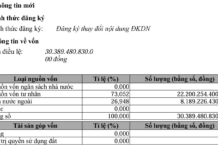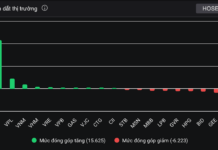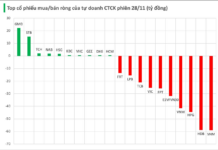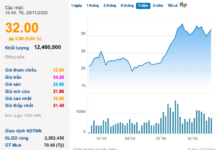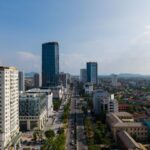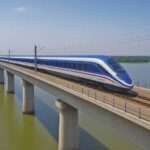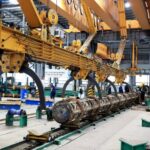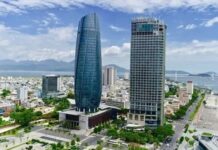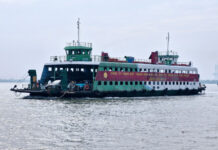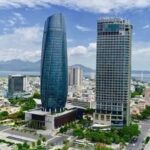On October 14th, the National Assembly Standing Committee continued to provide feedback on the adjustment of the national master plan for the 2021-2030 period, with a vision to 2050. During the session, the drafting agency reported on the adjustment of development axes following the merger and rearrangement of provincial-level administrative units.
Adjusting Development Axes
Presenting the Government’s proposal, Deputy Minister of Finance Tran Quoc Phuong stated that the socio-economic regions remain fundamentally divided into six, but with significant adjustments in scale and scope due to the impact of mergers. Some regions have revised boundaries, population sizes, and areas to align with new development directions.
Notably, the North Central Region, the South Central Coastal Region, and the Central Highlands have undergone considerable changes. The Northern Midlands and Mountainous Region is directed to develop the Thai Nguyen – Phu Tho industrial belt as a growth driver, connecting with Bac Ninh to form an inter-regional industrial belt. The plan also includes completing the Lao Cai – Hanoi – Hai Phong railway and constructing the Lang Son – Hanoi railway.

Ministry of Finance leaders present new highlights in this planning revision. Photo: NATIONAL ASSEMBLY
|
The Red River Delta is identified as the region leading the restructuring of the national economy and innovating the growth model. It will vigorously develop new service sectors such as creative industries, fintech, smart logistics, and digital technology services.
For the North Central Region, the plan emphasizes developing Hue City into a prominent Southeast Asian and Asian hub for culture, tourism, and specialized healthcare. The Thanh Hoa – Nghe An – Ha Tinh coastal area will become a regional and national industrial center, serving as one of the country’s key growth drivers.
The drafting agency also proposes reorganizing the South Central Coastal Region and Central Highlands post-merger, forming East-West economic corridors to enhance inter-regional connectivity and effectively utilize new development spaces.
Significantly, the Southeast Region is directed to develop Ho Chi Minh City into a civilized, modern, dynamic, and creative urban center—a leading international financial hub in Southeast Asia, on par with major Asian cities. HCMC will accelerate the construction of urban railways, connecting lines to neighboring cities, and the Long Thanh Airport.
By 2026-2030, the Southeast Region aims for an average GRDP growth rate of approximately 10% annually. It will focus on developing industries such as mechanical engineering, petrochemicals, pharmaceuticals, new materials, electronics, semiconductors, artificial intelligence, cybersecurity, and digital technology. This region will also become a leading Southeast Asian hub for financial services, trade, tourism, and international exchange.
For the Mekong River Delta, the plan targets an average GRDP growth rate of 9-9.5% annually during 2026-2030. The region will evolve into a modern, sustainable agricultural economy, promoting digital and smart agriculture. It will also effectively implement the project for sustainable development of 1 million hectares of high-quality, low-emission rice cultivation linked to green growth.
Additionally, the Mekong River Delta will focus on developing maritime economies, tourism, maritime services, renewable energy, aquaculture, and fisheries. It will establish East-West and coastal economic corridors to create new growth momentum for the entire region.
Avoiding Term-Based Thinking
Reviewing the adjustments, Nguyen Minh Son, Deputy Chairman of the National Assembly’s Economic Committee, noted that changes in regional divisions significantly impact each area’s development direction. Therefore, intra-regional connectivity, especially between coastal and mountainous areas, must be carefully assessed.
The reviewing agency emphasized clarifying the impact of separating former Vinh Phuc Province from the Red River Delta and former Bac Giang Province from the Northern Midlands and Mountainous Region to ensure their developmental connectivity.
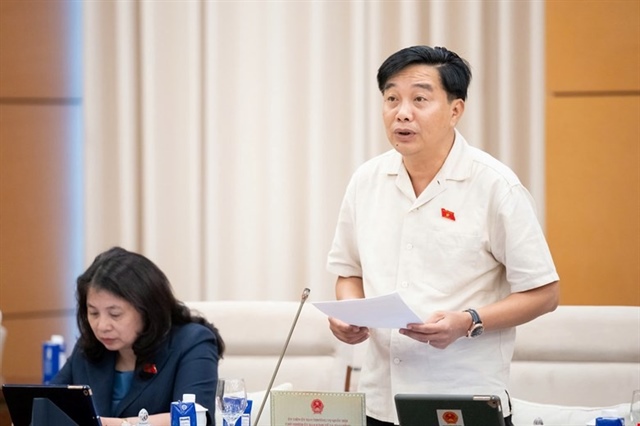
Deputy Chairman of the National Assembly’s Economic Committee Nguyen Minh Son presents the review agency’s perspective. Photo: NATIONAL ASSEMBLY |
In response, Tran Quoc Phuong explained that Vinh Phuc is now grouped with Hoa Binh and Phu Tho in the Northern Midlands and Mountainous Region. Thus, the national master plan has adjusted the northern growth driver region to include Hanoi, Quang Ninh, and Hai Phong as the core, expanding to intersect with neighboring provinces like Bac Ninh and Vinh Phuc to form new growth drivers.
For the Central Region, the revised plan emphasizes creating intra-provincial and inter-regional economic corridors to generate new development spaces.
Concluding the session, Deputy Chairman of the National Assembly Tran Quang Phuong stated that the Standing Committee agrees with many points in the proposal and review report.
However, he urged the Government to ensure the plan’s adjustments are stable, long-term, scientifically grounded, and practically viable, avoiding term-based or short-term localized thinking.
Additionally, the Government must clarify the basis and impact of the new regional division, particularly for the North Central Region and the South Central Coastal Region – Central Highlands, ensuring strong economic, social, and environmental linkages.
|
The national master plan prioritizes investment in key transport infrastructure: constructing high-speed North-South railway sections, international railways, and urban railways in Hanoi and HCMC; completing Lach Huyen and Cai Mep – Thi Vai international gateway ports. Developing Can Gio International Transshipment Port (HCMC), along with Lien Chieu (Da Nang), Nam Do Son (Hai Phong), Hon Khoai (Ca Mau), Van Phong (Khanh Hoa), and Tran De (Can Tho) ports. |
VIET LONG – MINH TRUC
– 11:38 14/10/2025
Governor Nguyễn Thị Hồng: Proactively Managing Monetary Policy with Optimal Timing and Dosage
In the coming period, to ensure high growth alongside macroeconomic stability, the State Bank will focus on enhancing capital utilization efficiency, developing the capital market, and promoting corporate bonds to mobilize medium and long-term capital, thereby reducing reliance on bank credit.
Latest Updates on the Ho Chi Minh City – Can Tho – Ca Mau Railway Investment
The proposed Ho Chi Minh City – Can Tho – Ca Mau railway line, envisioned by a leading enterprise, promises a transformative transportation network. This ambitious project envisages a double-track, electrified system with a standard gauge of 1,435mm, catering to both passenger and freight services. Designed for speeds ranging from 200 to 250 km/h, this railway aims to revolutionize connectivity across Southern Vietnam.
Cần Giờ No Longer Stands Alone
Experts believe that following Ho Chi Minh City’s administrative boundary expansion, Can Gio is entering a new phase of development with a significantly enhanced status compared to before. When integrated into the city’s overall development plan, Can Gio will emerge as a crucial link in the interconnected urban-coastal tourism chain, which includes Can Gio – Vung Tau – Long Hai – Ho Tram.












